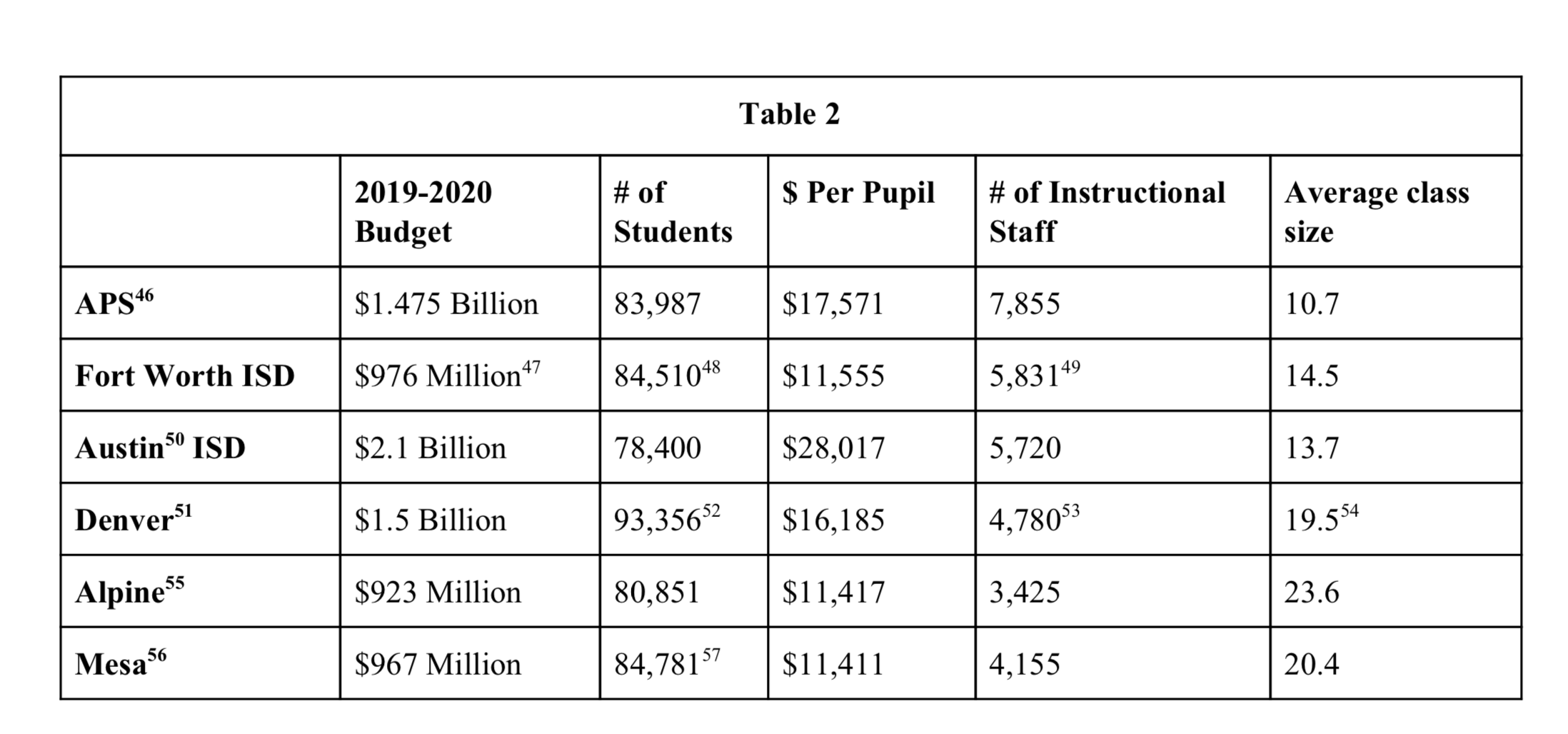Rio Grande Foundation Study: Albuquerque Public Schools Spend Big, don’t See Results
Comparing school districts in New Mexico is often challenging. Albuquerque Public Schools (APS) is one of the largest districts in the entire country. With that come certain “efficiencies of scale” as well as some serious drawbacks.
The answer is to compare similar districts with roughly similar demographics across state lines. Laura Abendroth a policy analyst with the Rio Grande Foundation has crunched the numbers in a detailed research project on the issue of school funding among various school districts of similar demographics. The paper is, “Albuquerque Public Schools v. Southwestern Regional School Districts: How Does Spending and Student Performance Stack Up?”
In advance of this project Abendroth considered numerous large school districts in states surrounding New Mexico. The primary consideration (aside from size) was demographics and poverty.
In addition to APS, Abendroth studied the Austin (TX) ISD, Fort Worth ISD, Denver Public Schools, Mesa Public Schools, and Alpine (UT) Public Schools.
Making solid comparisons across state lines is never easy. For example APS has the highest percentage of Hispanics and Native Americans of the districts studied, but APS has a lower percentage of “English Language Learners” than any district beside Alpine.
Abendroth found (during the 2019-2020 school year) that while Austin ISD’s spending is quite high relative to ALL other districts studied at $28,000 per pupil, APS spends the next-largest amount at $17,571. Denver spent $16,000 per pupil and the other districts all spent $11,000 or so. So, APS is a relatively big-spender on a per-pupil basis.
Indeed APS spends about 20% of its operating budget on capital projects while the other districts spend just 10% of their budgets. Notably, most of those districts have smaller overall budgets, thus making that capital outlay figure even larger in real terms.
Also, APS DOES spend a lot of money in the classroom. In fact, APS class sizes are just 10.7. Austin and Fort Worth are in the mid-teens per class while Denver and Mesa are very close to 20. Alpine School District has 23.6 students on average.
Unfortunately for APS students all of this spending and extra attention in the classroom doesn’t have the impact we would like. Across the board (in terms of graduation and 4thand 8thgrade reading and math NAEP scores) APS only outperforms Fort Worth ISD. To be blunt, APS taxpayers are not really getting their money’s worth.
While solutions are beyond the scope of Abendroth’s paper the Rio Grande Foundation has touted more robust “school choice” options, elimination of LEED mandates and “Prevailing Wage” laws both of which drive up construction costs, and reduction in overall District overhead.

